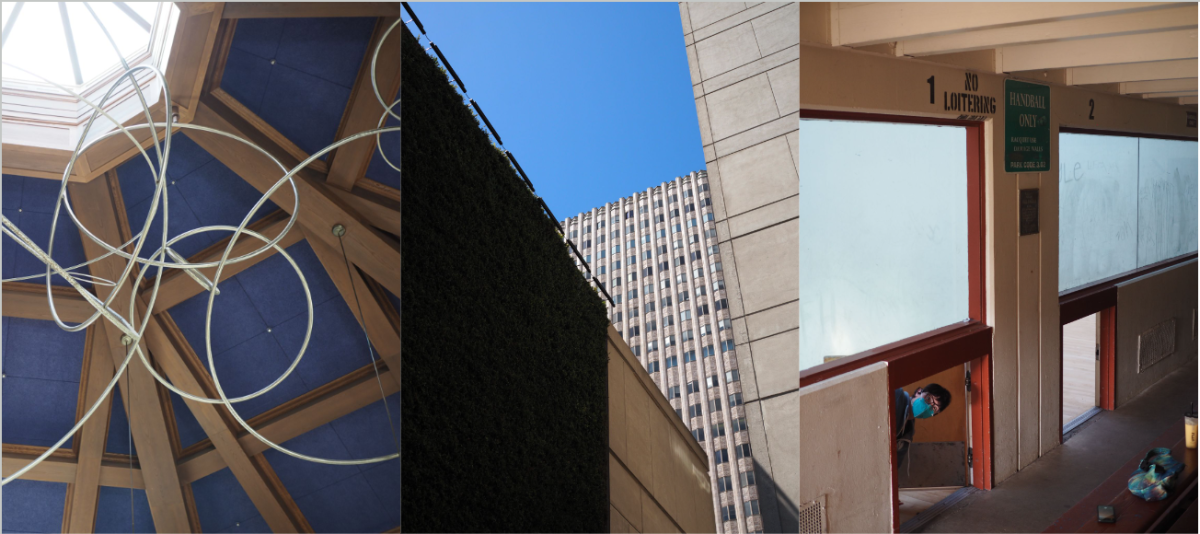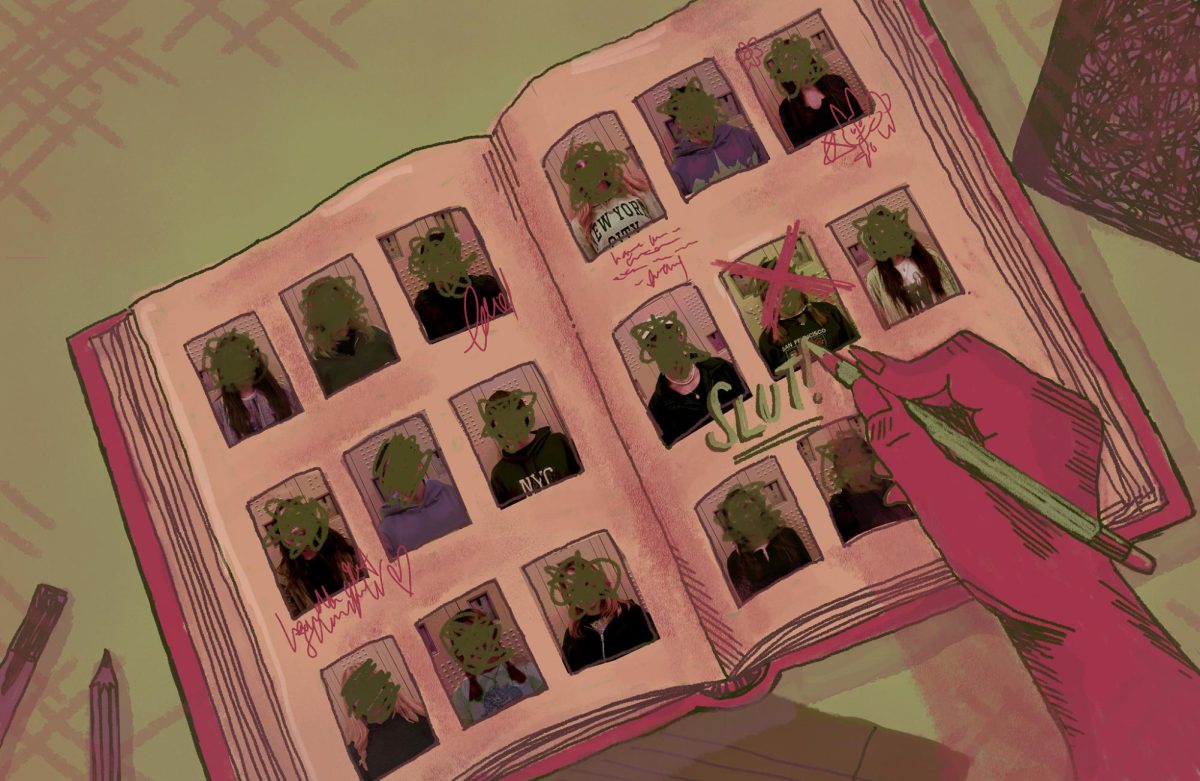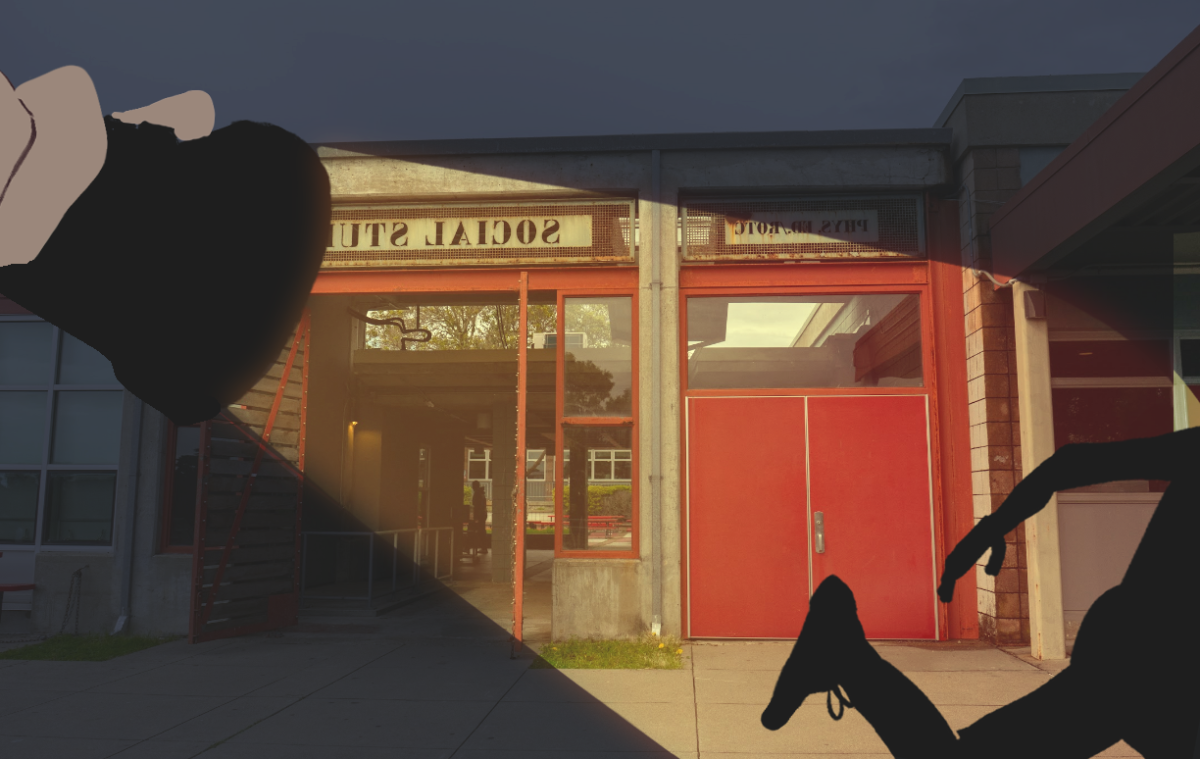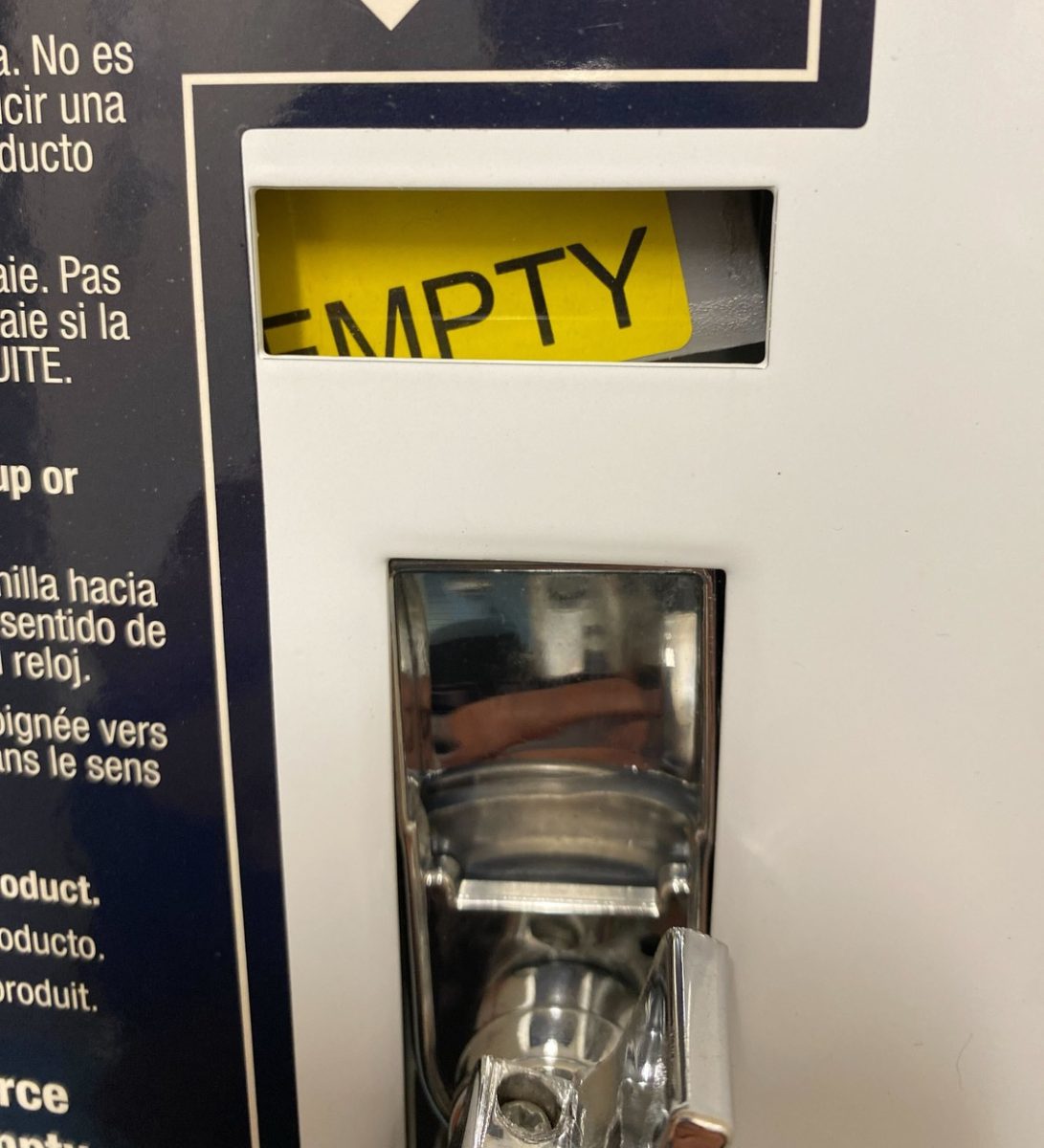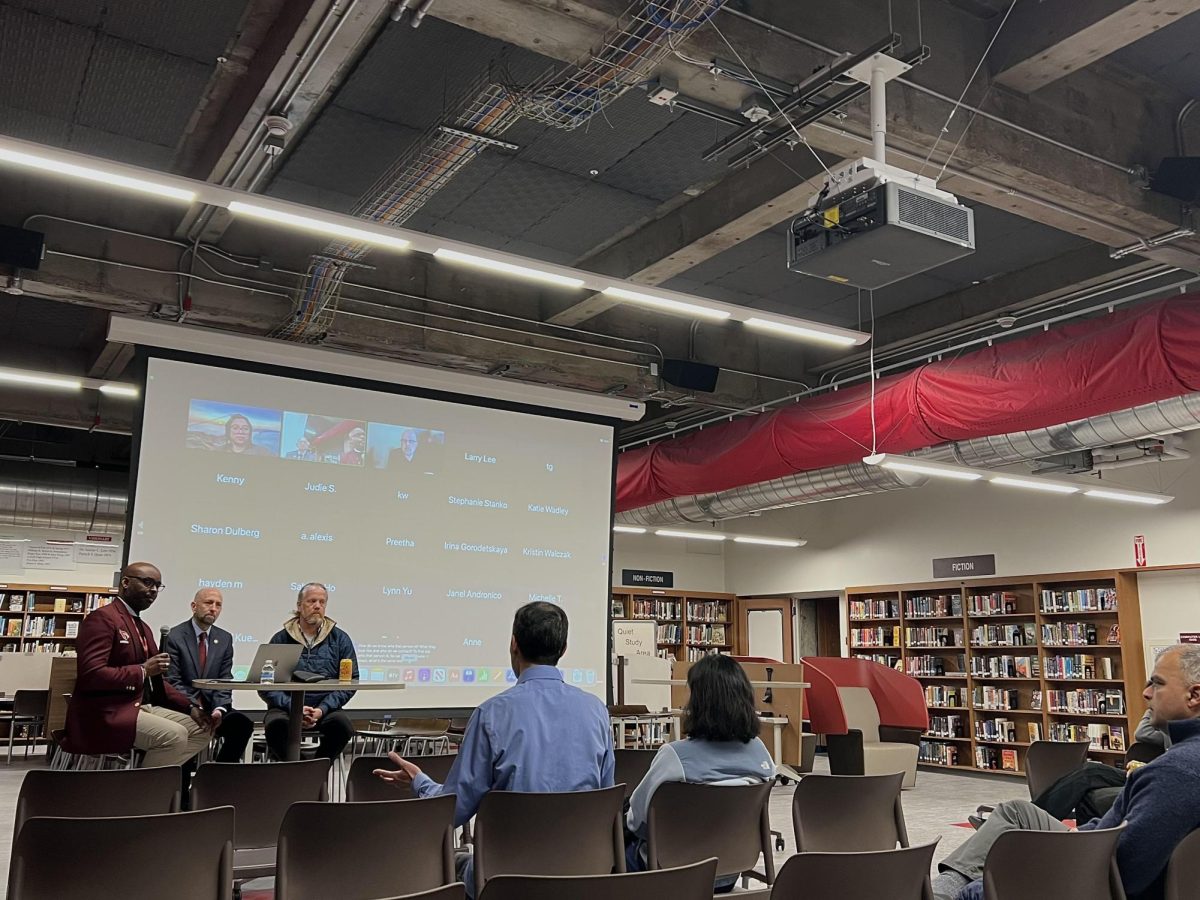By Joseph Kim
Originally published on October 27, 2014
The school has received approval from the district for an updated public address system after two recent school-wide evacuations.
Since the earthquake drill on Aug. 29 and the anonymous bomb threat on Sept. 16, the school’s administration and Union Building Committee have agreed that emergency procedures and equipment require improvement, according to assistant principal of administration Michael Yi.
The district has approved the school’s request for an updated PA system and the school is now planning specifics, according to Yi. After examining the current PA system, the school’s technician and administration found problems with the speaker’s low volume and incorrectly angled position toward the football field instead of the Ts.
Bomb Threat Prompts School-Wide Evacuation
Nothing is set in stone, so you have to be able to make changes when things come up.
Police are investigating the anonymous bomb threat on Sept. 16, according to School Resource Officer Richard Austria of Taraval Station. Police declined to comment on the situation, because of the ongoing investigation.
At 1:05 p.m. on Sept. 16, an anonymous person called the school’s main office, claiming that a bomb was in the school building. Dean Ray Cordoba called Austria to alert SFPD, according to principal Andrew Ishibashi. Ishibashi announced a Stage 1 Evacuation over the PA system.
While students and teachers exited classrooms and went outside, Yi, Cordoba, assistant principal of pupil services Margaret Peterson and construction manager Pam Welty helped the bomb squad and police check every backpack in every classroom for bombs, according to Ishibashi. They went in with the bomb squad to take note of anything that seemed unusual or out of place. After a thorough search of the campus, the search team did not find any suspicious objects or substances, according to Yi.
The police commended the school on how fast over 2700 students exited the buildings and how well-behaved the students were.
Students and staff were very cooperative despite the confusion, according to assistant principal of curriculum Holly Giles, who stayed on the football field to relay updates from police and administration to staff, students and parents. A bomb threat phone call report form, which records information from the call-in, was not completed due to recent personnel changes and the staff’s unfamiliarity with bomb threat procedures, according to Yi. “The form itself primarily serves as a clue for the SFPD to assist their investigation,” he said. “We did not fill it out afterwards because recalling the information could be inaccurate.” Nearby Lakeshore Elementary School was informed about the situation as soon as Lowell received the bomb threat call, according to Yi. “The students at the school were not required to evacuate since they’re a safe distance away from Lowell,” he said. By 2 p.m., SFPD had blocked off Eucalyptus Drive, according to Ishibashi. Several police dogs helped officers with the investigation. Dogs from the San Francisco International Airport were also called in, because the campus is large and needed to be checked quickly and thoroughly, according to Yi. Students and staff stayed on the football field for over two and a half hours. For safety reasons, SFPD did not allow students or staff to leave the football field, according to Yi. Before the bell rang at 3:30 p.m., students could only leave campus if a parent picked them up. The “all-clear” was given and the building reopened at around 4:10 p.m.
Although many resources like sunblock and food were lacking, students who needed to use the bathroom were teacher-escorted to the bathrooms in the Ts. The nurse was also prepared to handle situations like asthma attacks, according to Giles. Currently, emergency supplies, such as flashlights and bandages, are stored in trunks around the school and updated by the Lowell Emergency Response Team (LERT) each school year. They were not used in the Sept. 16 evacuation, according to Giles. The police asked the San Francisco Municipal Transportation Agency to let students onto MUNI buses and trains for free that afternoon, since many had left their money and Clipper cards in classrooms, according to Giles. “We appreciate both SFPD and MUNI for that,” she said.
Ishibashi showed pride in his staff and students. “Some of the parents were shocked how fast we could locate students,” he said. When they approached Ishibashi, he was able to check his master attendance list, radio security on the football field and find students through the registries. “The police also commended us on how fast over 2700 students exited the buildings and how well-behaved the students were,” he said.
Napa Quake Calls for Surprise Evacuation Drill
2740 students filled the football field on Aug. 29 in an earthquake drill prompted by the 6.0 earthquake that shook Napa Valley that previous weekend.
For most earthquake drills, students only perform the drop, cover and hold in their classrooms, without doing a full-scale evacuation. However, the recent earthquake in Napa prompted all San Francisco Unified School District schools to carry out the entire process.
The new X-wing, temporary bungalows set up on the basketball courts during construction, also created a structural barrier that required the school to change its procedures, according to Yi. “Nothing is set in stone, so you have to be able to make changes when things come up,” he said. In addition to the changes caused by the X-wing, teachers have suggested that attendance from particular classes be compared to the attendance tracked during the drill to ensure a more accurate student count.
The fact that our school was able to pull it off with such short notice goes to show how good our response system is.
SFUSD schools were notified by the superintendent on Aug. 26, three days earlier, which gave teachers and staff little time to prepare and organize the drill. “Having the superintendent call a drill on such short notice was not the greatest idea because the most effective way to do drill is to have people practice drills in a routine manner,” science teacher and UBC representative Katherine Melvin said. “To make everybody do a drill because of an earthquake raises the fear level of students and teachers and I’m not sure that that is positive. However, the fact that our school was able to pull it off with such short notice goes to show how good our response system is.”
Apart from the drill, the school has been preparing over the summer by undergoing earthquake retrofitting on the first floor.
The earthquake and the drill also serve as powerful wake up calls for students and their families. “Everyone should be prepared with emergency procedures and emergency supplies to last at least three days,” Melvin said.
Behind the Scenes: The Lowell Emergency Response Team
LERT has many responsibilities concerning emergency procedures on campus, including the earthquake drill on Aug. 29 and the evacuation on Sept. 16. Each school in SFUSD has plans with specifications like personnel and locations, according to Yi. The principal, assistant principals, administration and support staff make up Lowell’s team.
We don’t want people to take bags that have seven books and weigh about thirty pounds, but we want people to remember their necessities and valuables.
LERT is also exploring other methods of communication, such as a text messaging system, to alert students and parents in the event of an emergency, according to Yi. “Ultimately, the final decision is in the hands of the district office,” he said.
One logistic that remains unclear is whether students should take their belongings in an emergency or drill. “There are pros and cons to bringing your backpack,” Yi said. “We don’t want people to take bags that have seven books and weigh about thirty pounds, but we want people to remember their necessities and valuables.”
Although LERT met on Sept. 17, protocol and procedures are still under revision, according to Yi. “It is important for us to be flexible, because procedures depend on the situation,” he said.
LERT hopes to implement an evacuation drill on the first day of each school year, in an effort to inform everyone, especially all new teachers freshmen, of the school’s emergency procedures, according to Yi. Teachers are also currently being trained to prepare for the possibility of a future bomb threat.
LERT continues to accumulate and sort through feedback from students, staff and particularly the parent community, concerning the bomb threat evacuation, according to Yi. “No matter what, the procedures are never going to be perfect, but we will keep improving,” he said. “Student and staff safety is our foremost concern any time.”
Terms To Know: The Emergency Evacuation Procedure
Stage 1 Evacuation:
Exit the building with your class and report to the basketball courts if on the west side of campus, soccer fields if in the middle of campus, or Rolph Nicol Park if on the east side of campus.
Stage 2 Evacuation:
Everybody go to the football field and line up by registry.
However, if a Stage 1 Evacuation is called, do not assume a Stage 2 Evacuation will also be called. The Stage 2 Evacuation location may also be changed according to needs. Depending on the nature of the emergency and its severity, SFUSD might send an update on a relocation site after the Stage 2 Evacuation, if required.
Whitney C. Lim and Joseph Kim co-authored this article.



